Berkshire's Parking Map.
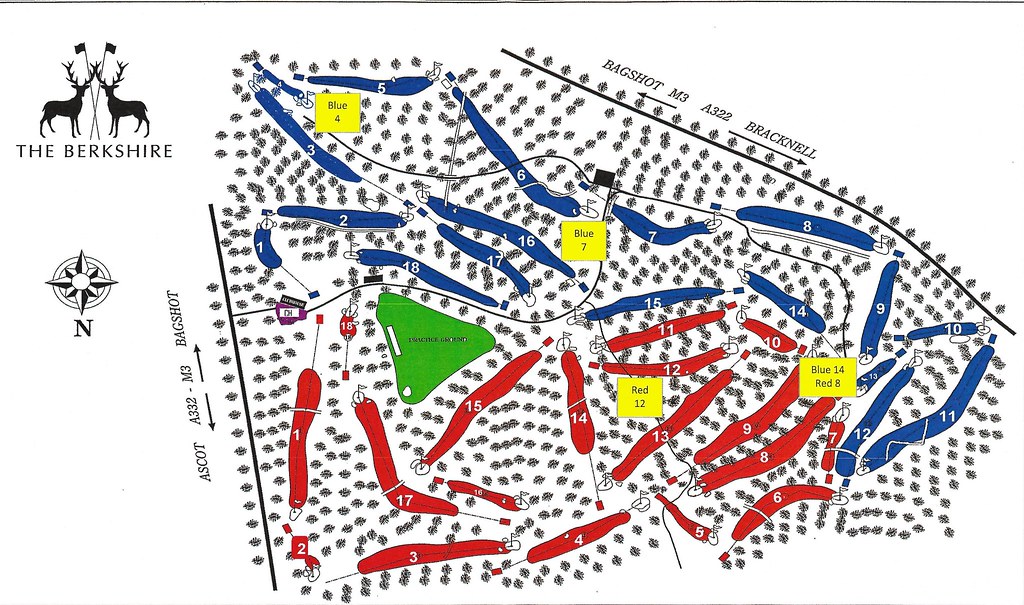
Set amongst towering pines which seemingly originated in Ascot, The Berkshire is one of the few clubs in GB&I which can boast of having two courses of high repute. Designed by Herbert Fowler in 1928, it is natural that some comparisons might be made with Walton Heath; Fowler’s other 36 hole master class of design in London environs. Other than generally being classed as heathland courses, there is little resemblance between Walton Heath’s stark battlefield of golf and Berkshire’s elegant and civilized approach to architecture. Twenty or so years separate the founding of the clubs and it might be said that between the two is Fowler’s Alpha and Omega. Regardless of which style one prefers, Fowler should be greatly admired for his skill.
Many believe Simpson was the mastermind behind Berkshire (and Beau Desert). I believe the previous Berkshire secretary investigated the matter and could find no references related to Simpson. It could well be that the similar bunker style (which I always thought was very loosely similar) between Simpson's work elsewhere and The Berkshire is down to the construction company. Franks Harris Bros, the construction firm most often associated with Colt, built the two courses at The Berkshire. While their work with Colt doesn't reflect a bunker style quite as complicated as some of Simpson's bunkers, there is little doubt they did elegant work which could possibly be confused with Simpson's.
Windsor Estate encompasses nearly 16,000 acres of Crown lands which includes Great Windsor Park, Ascot Race Course and Swinley Forest GC. The Berkshire occupies land within the estate which was mainly cleared during WWI for wood to reinforce trenches. When treeless, it was plainly obvious this land was ideal terrain for golf. It isn’t unheard of for a course to be built on Crown land, but for the government to pay the bill for the clubhouse and construction...of two courses...is truly a wonder.
The Red Course is set entirely on more dramatic, elevated land compared to the Blue, which makes for a more attractive round. The Red also has the unusual mix of 6, 6, 6 - that is six holes of each par. Most of the par 5s are essentially long par 4s that good players will want to reach in two, but remain testing because of longer approaches. We get one of these par 5s for the opener, although it is over 500 yards in length.
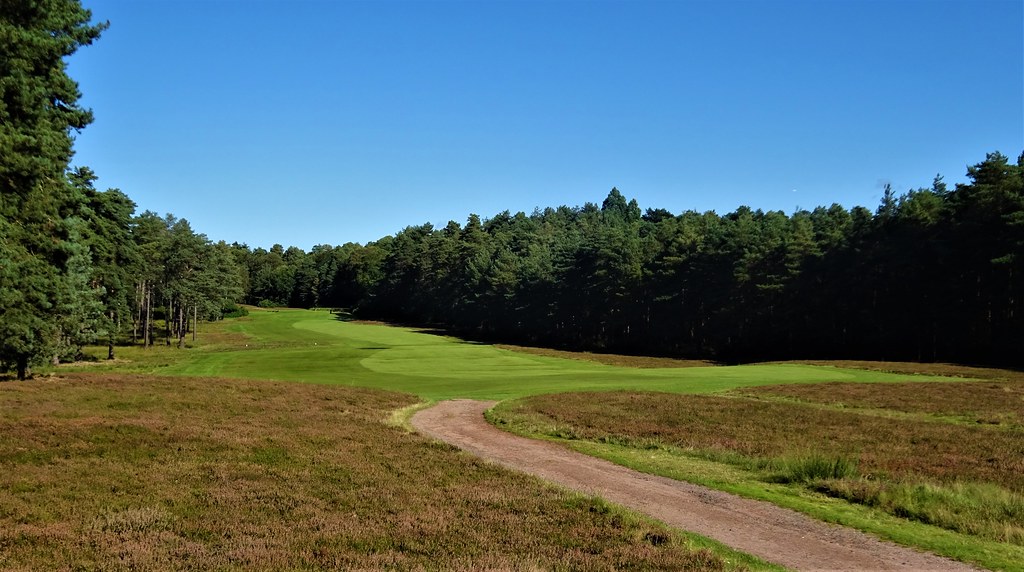
A steep incline leads to the middle of the green
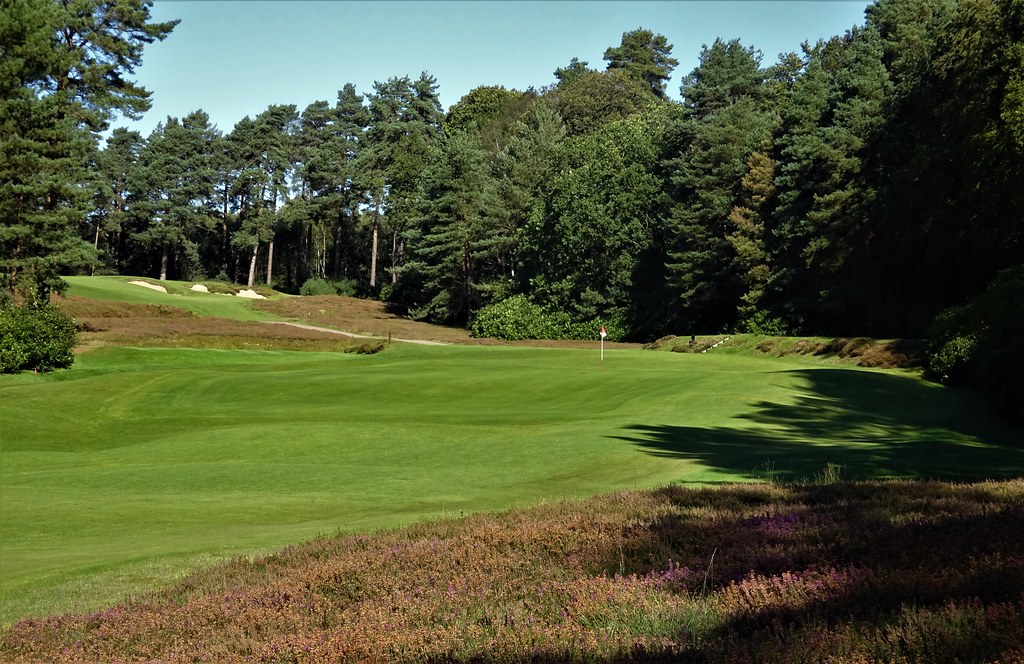
Maybe two extra clubs are necessarily added to tackle the uphill, short 2nd.
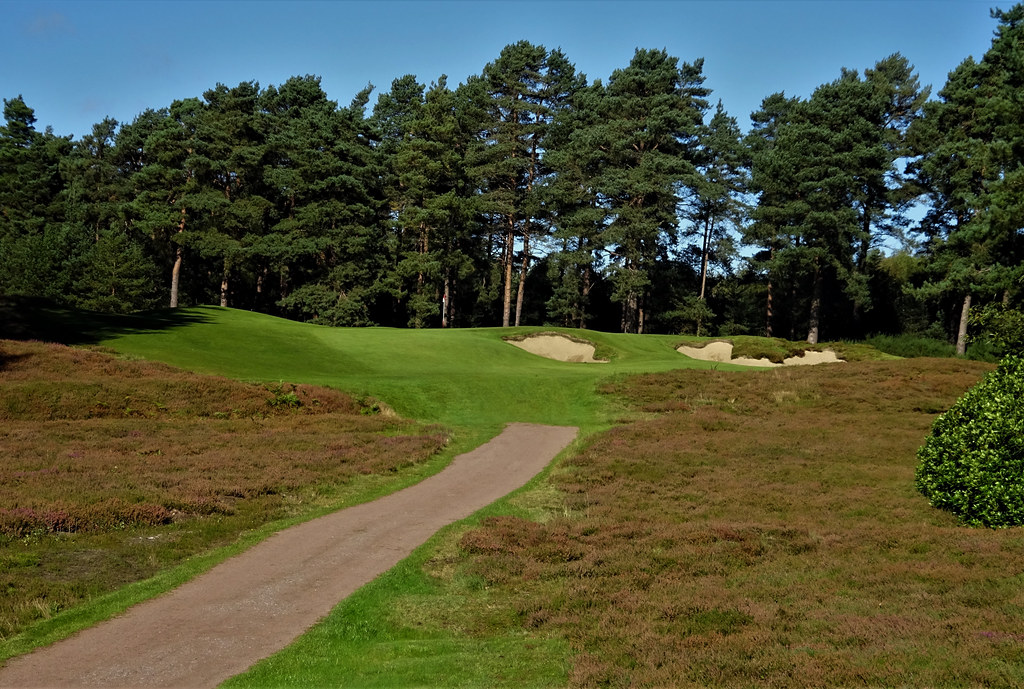
There is a sharp run-off to the rear of the green.

At 458 yards, the third is one of those short par 5s. By modern standards, the Red Course should be a par 68, 6139 yard monster. With so many uphill approaches it isn't unreasonable to suggest that these are a hard 6100 yards.

Behind the green.

The 4th is a deceptively difficult par 4 of 371 yards.

In a strong cross wind, the short 5th seems as if the green is an island in a sea of heather.

A closer look.
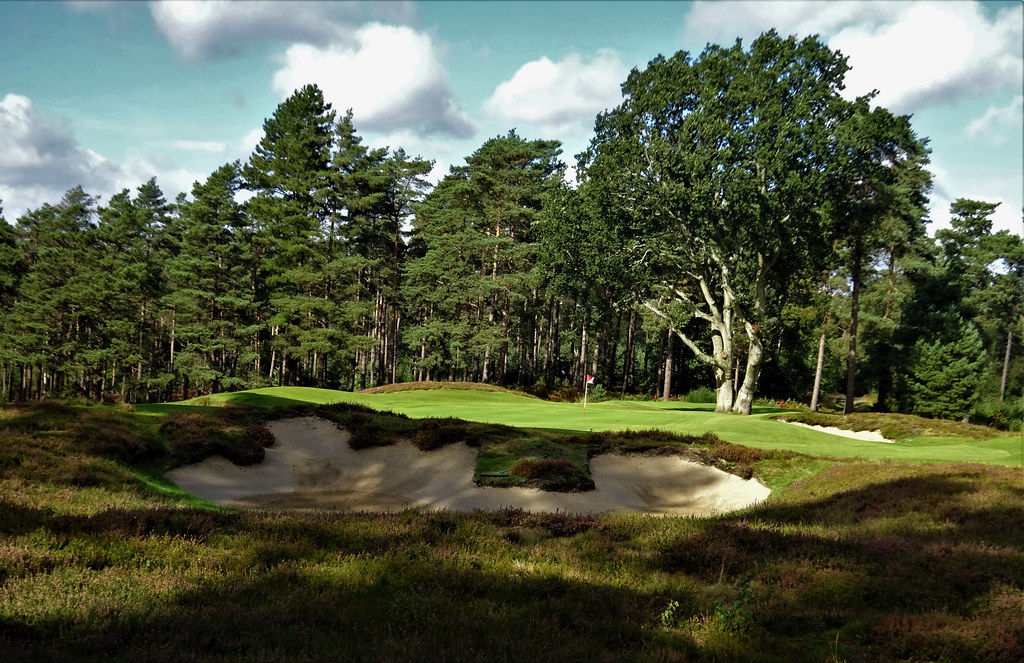
Behind the green.
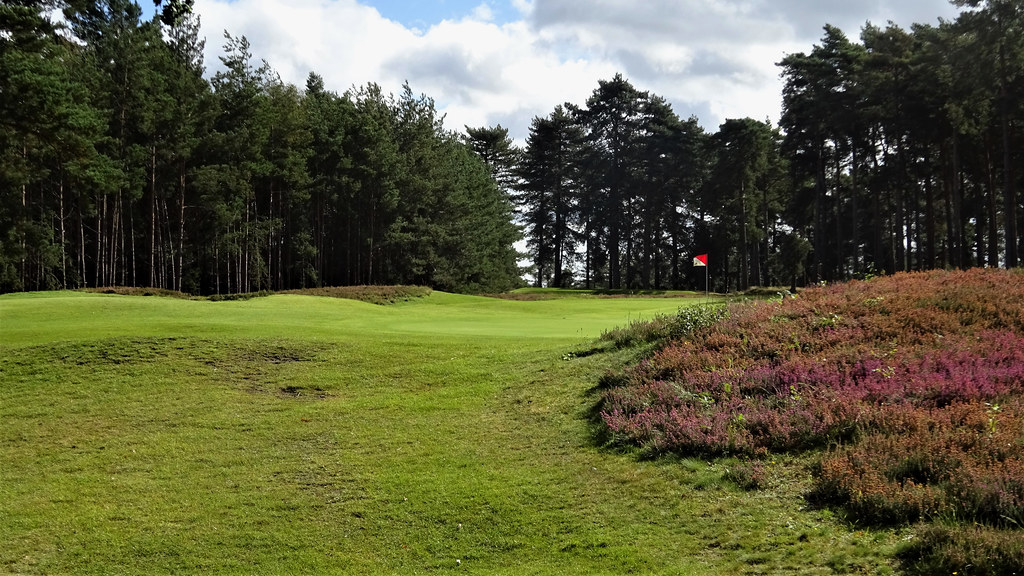
More to follow.
Ciao